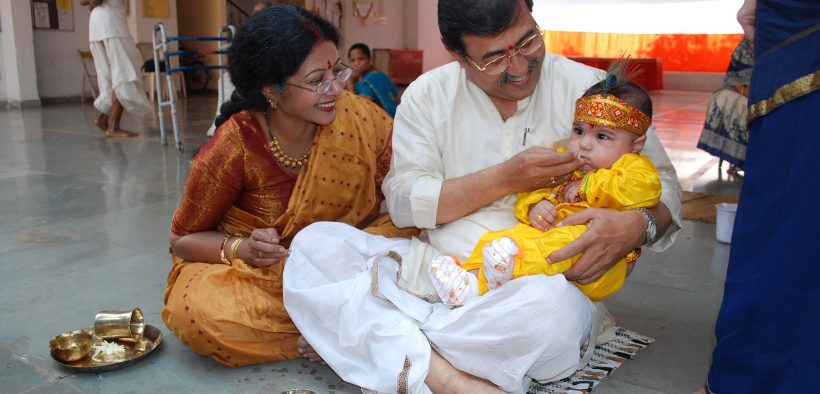In Indian culture, the Annaprashan ceremony is a significant and emotional rite of passage, celebrating a baby’s first intake of solid food. Rooted in Hindu tradition, the word “Annaprashan” comes from Sanskrit—“Anna” meaning food or grain, and “Prashan” meaning feeding. Typically performed when the baby is around six months old, this event marks an important milestone in a child’s life, bridging the phase from exclusive breastfeeding to a diet of solid food.
Advertisements

Held with much joy and devotion, the ceremony is attended by close family members and friends who gather to shower the child with blessings for health, strength, and a prosperous future. It is not only a spiritual ritual but also a symbolic initiation into the family’s food culture and traditions. The baby is usually offered rice pudding or a similar traditional dish, often sweetened with jaggery or sugar and flavored with ghee or cardamom, depending on regional customs.
A priest is often invited to conduct sacred rituals and chant prayers, invoking divine protection and good fortune. Elders and family members then take turns feeding the child a small bite, representing their love and collective blessings. In some regions, playful traditions are also included, such as placing symbolic items like books, coins, or toys before the child to predict their future interests or profession.
While the spiritual essence of Annaprashan remains constant, the way it is celebrated has evolved with time. Many families now hold the ceremony in banquet halls or restaurants, include modern decor, and even live-stream the event for relatives abroad. Parents are also choosing organic or allergy-sensitive foods and incorporating elements from other cultures to reflect their contemporary values.
Despite these modern adaptations, the heart of Annaprashan lies in its message of love, nourishment, and family unity. It is a cherished celebration that honors both tradition and the evolving nature of parenthood, creating treasured memories that last a lifetime.


